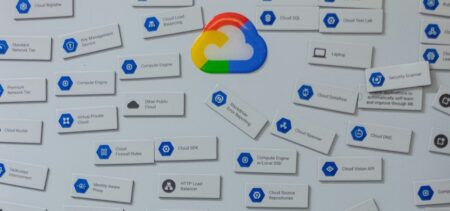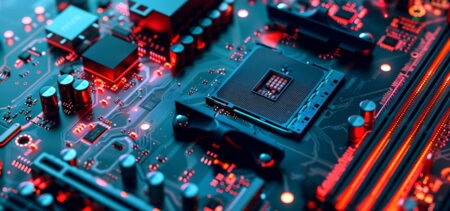Robots, or more precisely, Robotic Process Automation (RPA), are becoming the unsung heroes of modern business operations. Picture this: a seamless, efficient, and error-free workplace where repetitive tasks are taken care of by digital colleagues, leaving your human workforce to focus on creativity and innovation. That’s the promise of RPA, and it’s transforming the way businesses operate.
In this article, we’re diving deep into the fascinating industry of RPA, exploring how this technology is reshaping networking and connectivity in ways that were once the stuff of science fiction. Whether you’re a tech enthusiast or a business owner looking to stay ahead of the curve, there’s something here for you.
What Is Robotic Process Automation?
In the not-so-distant past, the idea of robots taking over repetitive tasks was firmly rooted in science fiction. Today, it’s a reality, and it’s transforming industries across the board. Robotic Process Automation (RPA) is at the forefront of this digital revolution, reshaping the way businesses operate. But before we delve into how RPA is impacting networking and connectivity, let’s take a closer look at what RPA is and why it matters.
The Basics of RPA
At its core, RPA involves the use of software robots or “bots” to perform repetitive, rule-based tasks with remarkable speed and accuracy. These tasks, which were traditionally carried out by humans, can range from data entry and invoice processing to customer support inquiries. What sets RPA apart from conventional automation is its ability to handle tasks requiring decision-making and cognitive capabilities. In other words, RPA bots can analyze data, make informed decisions, and adapt to changing circumstances.
How RPA Works
Picture RPA bots as diligent, tireless assistants working 24/7 without breaks. These digital workers follow predefined rules and interact with various software systems and applications just like their human counterparts. However, RPA doesn’t require extensive changes to existing systems. Instead, it acts as a layer that seamlessly integrates with your current software infrastructure.
Applications Across Industries
RPA finds applications in diverse industries and departments, from finance and HR to customer service and logistics. Companies are leveraging RPA to streamline processes, reduce errors, lower operational costs, and perhaps most importantly, liberate human talent for more strategic, creative, and value-added roles.
RPA in Networking
The world of networking and connectivity is the invisible backbone that keeps our digital lives humming along smoothly. But behind the scenes, there’s a lot happening, and RPA is here to make it even more seamless. So, how exactly is RPA shaking up the networking game?
Enhanced Network Management
Imagine your network as a complex web of connections, devices, and data flows. It’s a dynamic ecosystem that requires constant monitoring, optimization, and troubleshooting. Traditionally, this involved a significant amount of manual labor. IT teams would spend hours sifting through logs, diagnosing issues, and applying fixes. But with RPA in the mix, these tasks become a breeze.
RPA bots can monitor network performance in real-time, flagging anomalies and potential issues before they escalate. They can even perform routine maintenance tasks like patching and updating software. This not only reduces downtime, but also allows human IT professionals to focus on strategic projects rather than repetitive maintenance.
Efficient Help Desk Support
We’ve all been there—struggling with a network issue and waiting in frustration for help desk support. But what if your support request could be addressed almost instantly? RPA is making it happen. When you contact the help desk with a network problem, RPA bots can swing into action. They analyze your issue, cross-reference it with a database of known solutions, and provide troubleshooting steps in seconds. In cases where human intervention is required, RPA can escalate the ticket to a support agent while providing all the necessary information. This means faster resolutions and happier end-users.
Automated Security Measures
Network security is a top priority for organizations of all sizes. The consequences of a breach can be catastrophic. RPA is bolstering network security by continuously monitoring for suspicious activity and responding swiftly.
For example, if an RPA bot detects unauthorized access attempts or unusual data transfers, it can trigger an immediate response. This might involve isolating the affected device, notifying security personnel, and launching an investigation. With RPA’s vigilance, potential threats are identified and contained before they can wreak havoc.
RPA and IoT
Let’s look at how RPA is forging a symbiotic relationship with IoT; it’s about smart homes, wearable devices, autonomous vehicles, and so much more. But with this vast ecosystem comes a need for efficient management, and that’s where RPA steps in.
Device Onboarding and Configuration
Imagine you’ve just purchased a new smart thermostat for your home. In the past, setting it up might have involved a tedious process of downloading apps, connecting to Wi-Fi, and configuring settings. But with RPA, this becomes a seamless experience.
RPA bots can handle the entire onboarding process. They can download the necessary apps, connect your thermostat to your home network, and even configure it based on your preferences. All you have to do is sit back and enjoy the comfort of your newly automated home.
Real-Time Data Management
IoT devices generate an enormous amount of data. From fitness trackers recording your daily steps to sensors in manufacturing plants monitoring machinery, the data flow is constant and diverse. RPA comes to the rescue by efficiently managing this data.
RPA bots can collect, process, and analyze IoT data in real-time. For example, in a smart factory, they can monitor equipment performance, detect anomalies, and trigger maintenance requests when necessary. In your daily life, RPA can analyze your health data from wearable devices and provide insights or even alert medical professionals in case of emergencies.
Enhanced User Experience
The seamless integration of IoT devices into our lives hinges on user-friendly interfaces and interoperability. RPA contributes to this by ensuring that different devices can communicate effectively.
For instance, if you use a smart home assistant to control your lights, thermostat, and security system, RPA can create scripts that enable these devices to work together harmoniously. This means you can set up “scenes” where saying “movie time” not only dims the lights, but also adjusts the temperature and locks the doors. RPA makes your IoT ecosystem an orchestra playing in perfect harmony.
RPA and IoT in Action
To truly grasp the impact of RPA and IoT, let’s explore how these technologies are revolutionizing various industries. From manufacturing floors to healthcare facilities, their presence is felt across the board.
Manufacturing and Industry 4.0
In the manufacturing sector, the combination of RPA and IoT has given birth to Industry 4.0. Factories are no longer just hubs of production; they are smart, data-driven ecosystems. RPA bots manage inventory, optimize supply chains, and handle routine tasks, ensuring seamless operations. Predictive maintenance, made possible by RPA’s data analysis capabilities, minimizes downtime and reduces costs.
Healthcare and Remote Patient Monitoring
In healthcare, IoT devices like wearable trackers and remote monitoring tools have become invaluable. These devices allow healthcare providers to track patients’ vital signs and health metrics continuously. RPA complements this by automating administrative tasks such as appointment scheduling, claims processing, and medical record management. This synergy enhances patient care, reduces administrative burdens on healthcare professionals, and improves overall healthcare efficiency.
Logistics and Supply Chain
The logistics and supply chain industry relies heavily on the efficient movement of goods. IoT-enabled sensors track the location and condition of shipments, providing real-time visibility. RPA manages inventory levels, automates order processing, and optimizes routing and scheduling. As a result, companies can respond swiftly to supply chain disruptions, minimize costs, and provide superior customer service.
Energy and Utilities
In the energy sector, IoT sensors monitor power grids, pipelines, and renewable energy sources. RPA analyzes data to predict equipment failures, optimize energy distribution, and reduce energy waste. This not only ensures a stable energy supply, but also contributes to sustainability efforts by reducing environmental impact.
Retail and Customer Experience
Retailers harness IoT devices to understand customer behavior, track inventory, and manage store operations efficiently. RPA complements these efforts by automating inventory replenishment, personalized marketing campaigns, and customer support processes. The result is a seamless and enjoyable shopping experience for consumers.
Final Thoughts
We stand at the threshold of an exciting future, beckoning us to contribute to a world where innovation knows no bounds. From the everyday conveniences of our smart homes to the intricacies of industries like healthcare, manufacturing, logistics, and retail, RPA and IoT have already become indispensable. They have changed the way we live, work, and do business, and their potential knows no bounds.
RPA and IoT, intertwined in a dance of efficiency and insight, not only redefine industries but beckon us to partake in a narrative where the human spirit thrives in creativity, problem-solving, and meaningful connections.
But it’s not just about the technologies themselves; it’s about what they enable. The fusion of RPA and IoT empowers us to connect the dots, analyze data, make informed decisions, and automate tasks that were once time-consuming and error-prone. It allows us to focus on what truly matters – creativity, problem-solving, and human interactions.














































